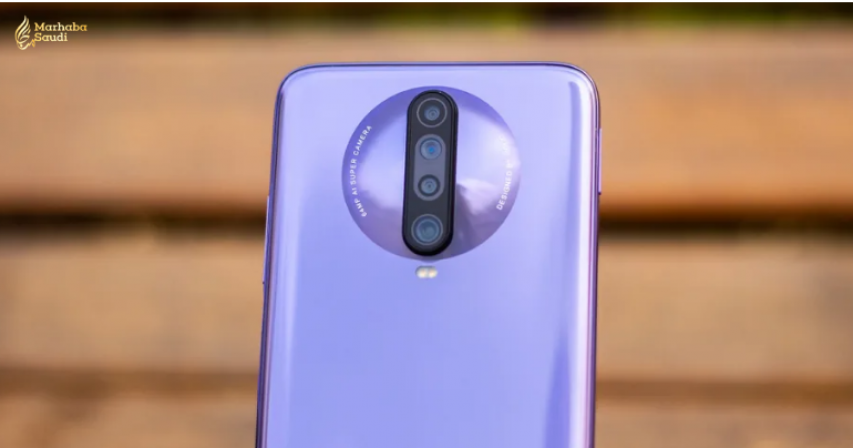POCO X2 Review: Redefines Value For Money, Just Like The POCO F1

Two years ago, a lot of people were taken aback by the launch of the POCO F1. By bringing a Snapdragon 800 series chipset to a price under the 20,000 mark, those taken aback not only included end consumers but also competing smartphone manufacturers. The POCO F1 wasn’t a perfect phone by a long margin. But it didn’t have to be, the recipe that had a healthy dash of affordability and performance, had already won consumers over.
In 2019, the departure of Jai Mani and other figures that played a key role in the development of the POCO F1 left the fate of the company hanging for a while. But after much deliberation, POCO came through with its second phone, the POCO X2.
The POCO X2 is not a true successor to the POCO F1. In fact, it’s a rebranded Redmi K30 that was unveiled in China last year. But despite not being the phone that all of us expected it to be, the POCO X2 has turned out to be quite the device. With marquee features like a 120Hz display, 27W fast charging and a Sony IMX686 64MP sensor, the X2 brings a lot to the table at a starting price of INR 15,999.
In fact, let me spoil it for you. The POCO X2 is probably the best smartphone you could get under the price tag of INR 20,000.
What's Smashable
-
Design & Build
In terms of design and build quality, the POCO F1 didn’t really grab a lot of attention. To save money, the POCO team mish-mashed modules and parts of existing Xiaomi phones. But, the POCO X2 is in a different league altogether. If the POCO X1 was discreet, the POCO X2 is flashy.
The phone is a glass-and-metal sandwich like the Realme X2 and makes use of Gorilla Glass 5 on either side. The sides of the back curves into the edges and gives a really ergonomic hold on the phone. But what the curved sides help in ergonomics, the weight and the sheer size of the phone offset. Tipping the scale at 208 grams, the POCO X2 is definitely not a light phone.
The bottom of the phone houses a 3.5m headphone jack, a USB Type-C port and a single speaker. Interestingly, the X2 brings back the IR blaster that was missed on the POCO F1. The IR blaster comes in quite handy to control electronics like televisions and air conditioners. It’s definitely one of the most underrated features in smartphones.
The back of the X2 features a glossy finish that glistens under the sun. For contrast, there’s a matte-finish circular patch in which the camera module sits. Interestingly, it also doubles up as a viewfinder for times when you want to take selfies with the cameras at the back.
As mentioned above, the design isn’t discreet at all. Backing my opinion is the colourways the phone’s available in; Atlantis Blue, Matrix Purple, and Phoenix Red. While I really liked the overall design of the phone, I personally tilt towards the more manageable build and universal design of the Realme X2.
-
Display
The X2’s display is one reason why the phone’s got so much attention. The phone has a massive 6.67-inch FullHD LCD display with a 120Hz refresh rate. Yes, and for context, the only other phone in India to have a 120Hz display is the ROG Phone 2 that costs more than twice the price of the base variant of the X2.
The refresh rate of 120Hz makes the user experience really smooth. While it’s not as refined as the software we’ve seen on OnePlus phones, I’m not complaining given the price range the phone’s slotted in. But just so you know, some elements of the OS lack the fineness you’d expect with a higher refresh rate. One instance is the animation that brings up the multitasking menu. But nonetheless, expect the UI to feel really smooth if you’re coming from a regular 60Hz display.
As far as gaming is concerned, there aren’t a lot of games that can take advantage of the 120Hz refresh rate. Alto’s Adventure is one such game but don’t expect the higher refresh rate to make a lot of difference while gaming, yet. Nonetheless, there are a bunch of games that already take advantage of the display of the POCO X2, including some popular titles like Real Racing and Plague Inc.
Although I would’ve preferred the AMOLED display of the Realme X2, the LCD display of the X2 isn’t bad. The FullHD+ display does a good job and is quite legible in sunlight too. Additionally, the display has support for HDR10 content and also has Widevine L1 certification that will allow you to stream content in HD on Netflix or Prime Video amongst others.
Instead of the bath-tub notch that we saw on the F1, the X2 has a dual punch-hole setup. If you’re wondering how that affects viewing experience, let me tell you, it doesn’t. It’s quite easy to get used to it and only comes to notice when the display shows light colours.
Also, since the LCD display doesn’t allow for an in-display fingerprint sensor, the fingerprint sensor now resides on the side within the power button. Due to the smaller activation area, it takes some time to place the finger right. But in terms of accuracy and speed, the fingerprint sensor has no qualms whatsoever.
-
Performance
The POCO X2 being a mid-ranger, doesn’t come with a Snapdragon 800 series chipsets. (If you’re wondering why you can read our explainer here.) But the gaming-oriented Snapdragon 730G it comes with is probably the best you could get in this price range. Technically the 845 is still more powerful in terms of CPU and GPU, but the 730G brings improvements to camera processing and artificial intelligence performance.
Coupled with the efficient software and the 730G, the POCO X2 is quite a treat to use. Applications open without any ado and gaming performance is pretty good too. Unfortunately, for PUBG players, the X2 doesn’t support extreme FPS at the moment which means you can only play it at 30fps. Although, at your own risk, you can use a GFX tool to make the game run at 60fps. Other games that I tried, including but not limited to Call of Duty, NBA 2K and Real Racing 3, played really well.
The phone does get a bit warm while gaming, but liquid cooling ensures that it doesn’t get out of control and keeps the performance good throughout.
The bottom-firing speaker on the X2 is not too bad but it’s placement to the left side of the bottom makes it very easy to be blocked during gaming sessions. Fortunately, for gamers, the 3.5mm headphone jack is still present. So, you can game and charge your phone at the same time. Output via the headphone jack is pretty good too.
With up to 8GB of RAM and up to 256GB of UFS 2.1, app opening speeds and RAM management is quite good too. Our unit was the 8GB+256GB variant but you can expect similar performance with the 6GB variant.
-
Battery & Charging
To make up for the higher battery consumption of the 120Hz display, the X2 comes with a 4,500mAh battery. How does it perform? Not bad for sure. Despite setting the refresh rate at 120Hz, the phone manages to last for an entire day with medium usage. With more hours of gaming, it might get a bit difficult to reach the end of the day.
During my usage, the phone averaged with a screen-on-time number of 5.5 hours when the refresh rate was set at 120Hz. Setting the display to 60Hz definitely improves battery endurance, but I don’t get why you’d want to do it.
But I’m pretty sure a lot of you’re interested in knowing if the 27W fast charging tech that charges a 4,500mAh battery beats the Realme X2’s 30W fast charging tech that charges a 4,000mAh battery. If you want the answer in a nutshell, yes it does! But there’s more to it.
The POCO X2 doesn’t seem to make use of trickle charging. If you’re new to the concept of trickle charging, allow me to explain it. To prevent degradation of the battery’s health and to avoid overcharging phones, most OEMs slow down charging during the last 10-15% of the charge cycle.
This is something that the Realme X2 does make use of too. And this is why, despite having a smaller battery and a higher-watt charging solution, the Realme X2 doesn’t charge as quickly as the POCO X2.
While, theoretically, the practice adopted by POCO X2 could degrade battery life in the longer run, nothing can be written in stone at the moment.
-
Camera
If there’s one thing I wasn’t expecting, it was how enjoyable the POCO X2’s camera experience would be. But before I talk about my experience, let’s get the specifications out of the way. The phone employs a quad-camera setup that takes centre-stage at the back. Headlining the setup is a 64MP Sony IMX686 sensor which is actually the first on a smartphone in India. There’s an 8MP ultrawide camera, a 2MP depth sensor and a 2MP macro sensor to add versatility.
Now coming to the performance, the POCO X2 easily takes one of the best pictures in its price segment. The Sony IMX686 sensor does a wonderful job in capturing detailed daylight shots that boast of good dynamic range and natural-looking colours. Yes, the X2 doesn’t produce shots that are as saturated as the ones we’ve seen on Realme, Samsung and Vivo phones.
But like most other phones in this price segment, the X2’s ultrawide camera does a decent job in daylight conditions. In terms of lens-parity, the POCO X2 isn’t quite there yet. Meaning, that the images taken from the ultrawide camera don’t match the images taken from the 64MP sensor in terms of detail, colours and dynamic range. But that’s expected and it’s alright. Night mode does a good job in taking low light shots, but it's not something that'll blow your mind away. Shots taken with night mode do a decent job in not over-exposing light sources.
The macro sensor, too, does a decent job and the sensor’s autofocus capabilities make things a bit easier to shoot. But good lighting is essential for social media-worthy shots.
Lastly, the 2MP depth sensor, even the one on the front, does a great job in separating the subject from the background. To be honest, in my opinion, the X2 is the best phone in its price segment to take portraits with.
Building on the portrait experience is an all-new movie mode that clips the aspect ratio to a cinematic 21:9 aspect ratio. While this might not sound like a big deal, I’m just shocked that no smartphone OEM ever thought of this before. Clicking portraits in movie mode is inexplicably enjoyable.
Now let’s talk about Vlog mode. If the rise of smartphones has made it easier than ever to create content, vlog made makes it easier to make this content presentable. You can choose from 7 different presets and shoot videos in slots of up to 3 seconds. Once you’re done shooting, the phone will process the videos into a short, edited clip with background music to match. My only complaint with this is that you can’t preselect the music or shoot longer videos.
The phone can shoot up to 4K@30fps and has support for EIS which lets it produce better videos than the comparable Realme X2. Although, the video output does suffer in low-lighting conditions.
POCO runs on Android 10 with MIUI 11 on top. But since it’s a POCO phone it comes with POCO launcher that gives the phone an app drawer and some additional features. But apart from this change, it’s MIUI through and through.
While I appreciate MIUI for the plethora of features that it offers, the software can get overwhelming at times, thanks to bloatware and ads. While I know that this is one way Xiaomi & POCO can offer good hardware at aggressive prices, it kills the experience at times. I’m still an advocate of smartphone manufacturers offering ad-free smartphones at a slightly higher price point.
Again, it’s not that there’s nothing that can be done with the ads. You can block most of it. But it’s quite a hassle to do so. Also, while some bloatware can be uninstalled, some of it just sticks out like a sore thumb.
And although 120Hz does add a layer of smoothness to MIUI, it’s still not as refined as what we’ve seen on phones like the OnePlus 7T and the Realme X2 Pro. While I know they’re twice as expensive, it’s something that I had to point out too. But given the fact that POCO has promised consistent software updates for the POCO X2 as it did with the POCO F1, we can expect some improvements in this regards.
-
No 90Hz Setting
The ASUS ROG Phone 2 could switch between 60Hz, 90Hz and 120Hz depending on the user’s requirements. On the contrary, the POCO X2 can only switch between 120Hz and 60Hz. There’s no stop for 90Hz in the settings.
ASUS ROG Phone 2
Now, given that the X2 isn’t excellent in terms of battery endurance, the 90Hz setting would’ve definitely been welcomed by me. 90Hz hits the sweet spot between smoothness and battery consumption.
Final Verdict
The hype generated by the 18-month gap between two consecutive products was a double-edged sword for POCO. Although the hype helped in spreading the word, it also raised consumer expectations to a higher level. Considering how wrongs things could’ve gone, I guess it’s safe to say that POCO did a really good job with the POCO X2.
While the POCO X2 while might not be the POCO phone you were expecting it to be, a flagship, it’s still a great smartphone that I’ll recommend to anyone buying a phone in the sub-20k segment. The 120Hz display, enjoyable quad-camera setup, great performance, and 27W fast charging really give the phone a well-rounded appeal.
If you’re wondering where the Realme X2 stands in comparison, let me tell you both phones are pretty good. With the Realme X2 you'll get a better display and a better software experience. In my opinion, the Realme X2 also features a slightly better design and ergonomics. But the POCO X2 has a 120hz display and better cameras. Depending on what matters to you, you can make a choice between the two.
/ Source: https://in.mashable.com/






Comments